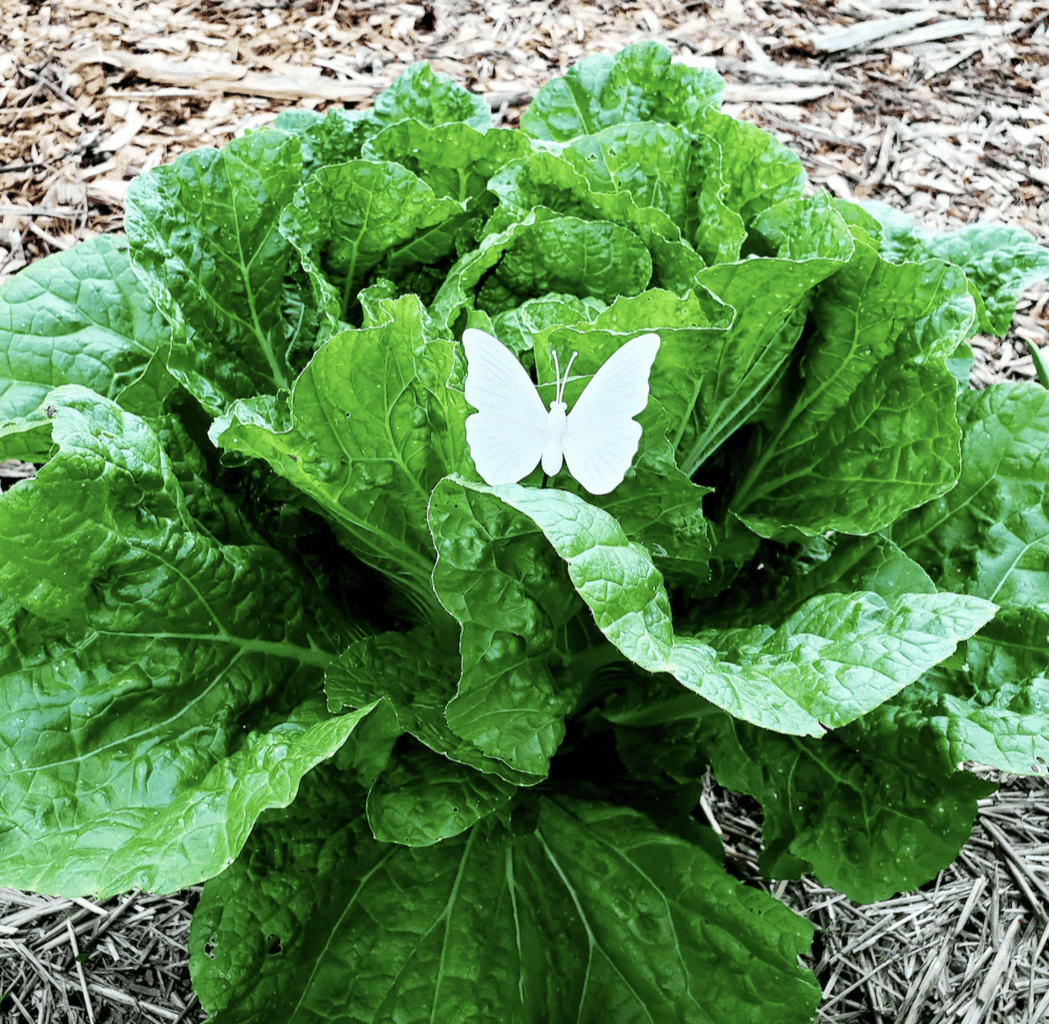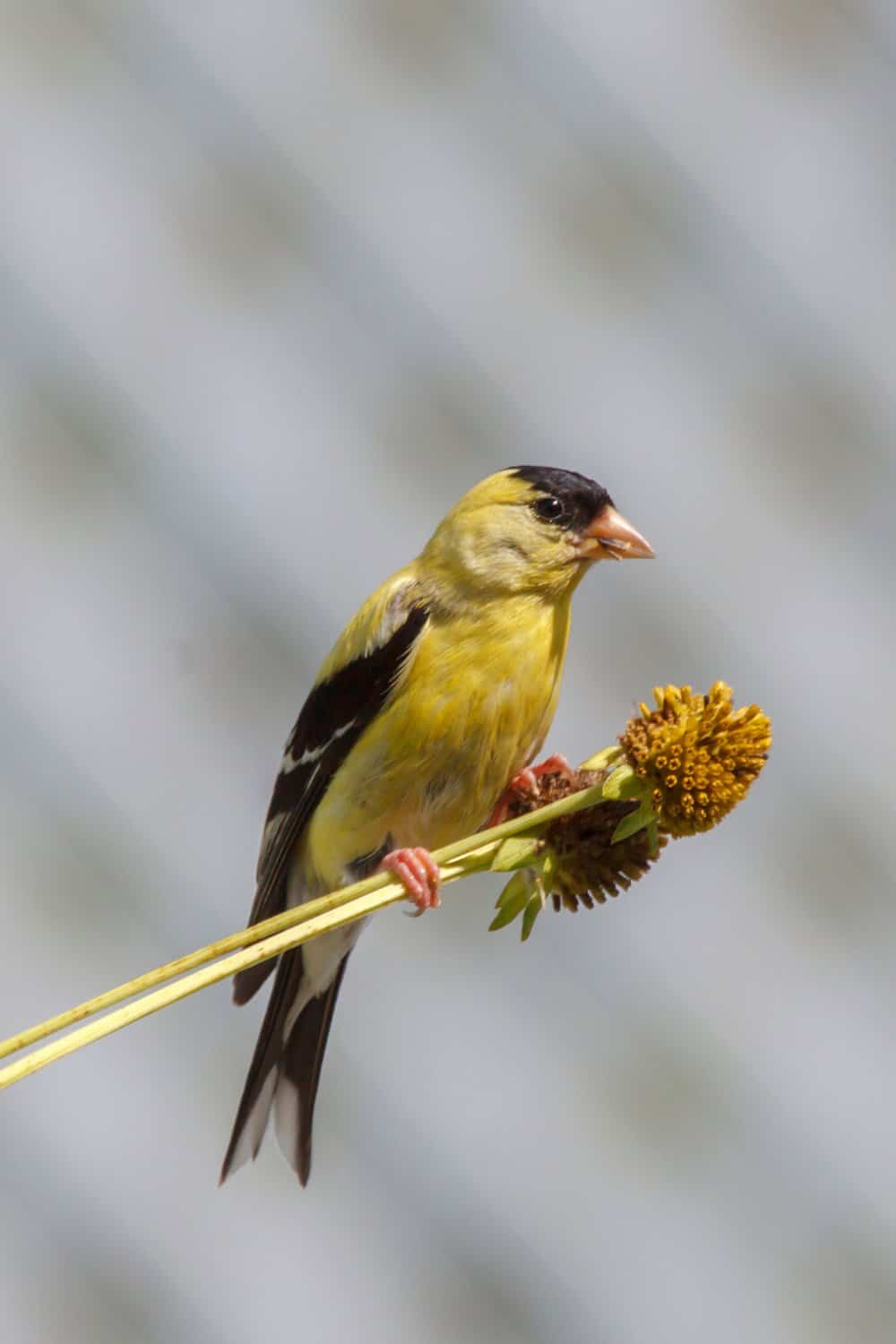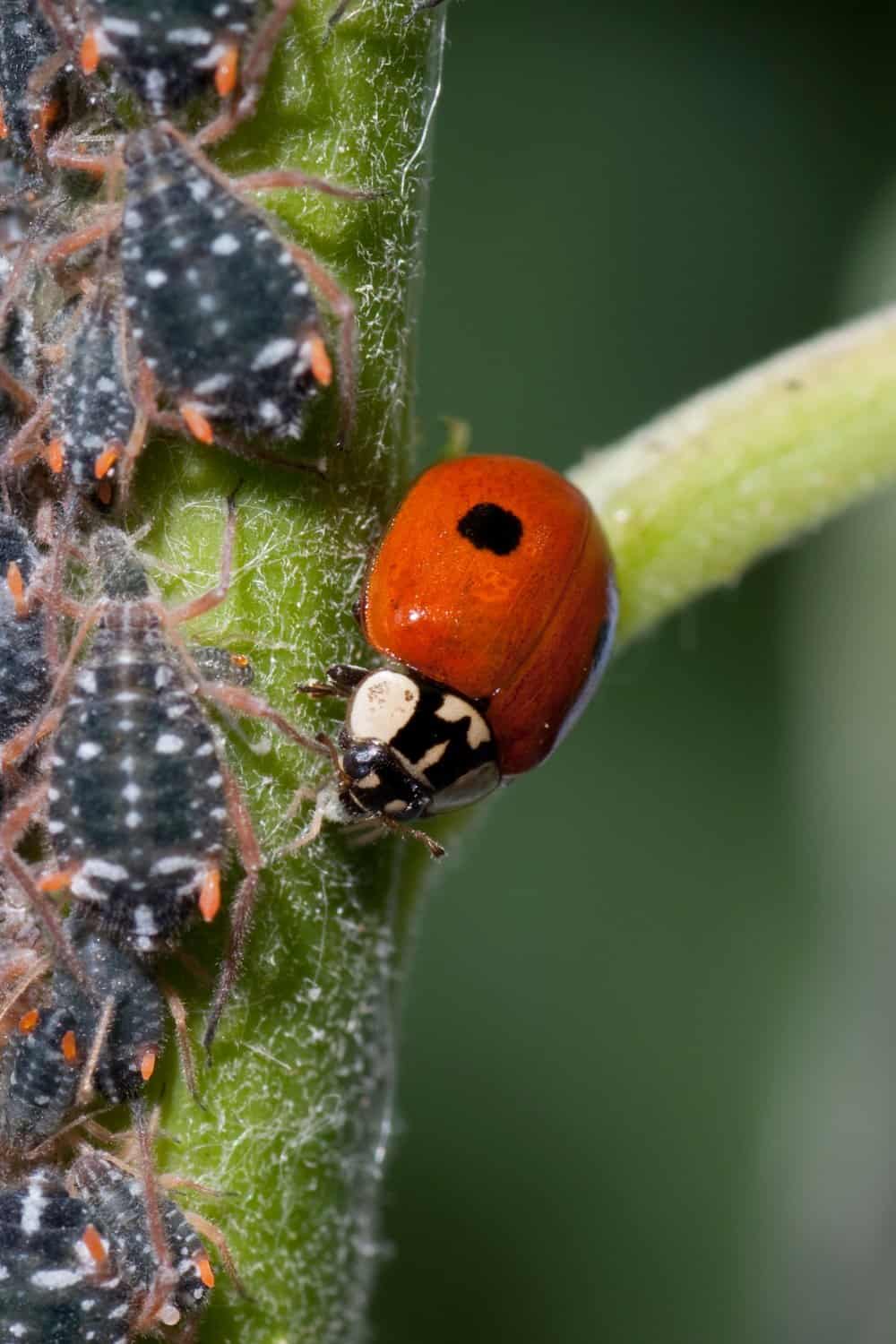Cabbage worms and cabbage moths can create real issues in your garden, and you may be wondering how to get rid of cabbage worms because of the destruction they cause. It will bring you a lot of relief to know that it is simple and easy to organically get rid of cabbage worms and cabbage moths from your garden.

Cabbage worms and moths are among the pests I hear about the most from other gardeners. These green caterpillars quickly develop and can ravage the leaves of any and all brassicas plants. This would include broccoli, kale, turnips, cabbage, cauliflower, kohlrabi, collards, and Brussels sprouts. A whole head of cabbage can go bad with just a few cabbage moths.
Also, cabbage moths are among the earliest bugs to reveal themselves in the spring. This means that even before frost has passed, your kale may be in danger of being harmed by cabbage moths and worms.
The truth is there is plenty we can do in a low-intervention or natural way to deter cabbage moths from beginning with, and even more so, there is plenty we can do to get rid of cabbage moths in our gardens.
As with any pest, from deer to aphids, you can find a way to organically handle the pest without harm to yourself or other beneficial visitors to your garden. Organic gardening uses naturally derived products to deter pests and encourage plant growth. Though I practice these methods, we go even further in our garden and believe in back-to-nature or low-intervention style gardening. This means we work with nature to deter and handle pests. Building a healthy ecosystem is the number one goal in our garden. So all of these solutions revolve around working with nature and not harming it, even naturally.
In fact, you can read about some of the best companion plants for broccoli, which also work to deter cabbage worms naturally.
First, let’s learn more about cabbage moths and cabbage worms.
What are Cabbage Moths and Cabbage Worms?
A cabbage moth is a small, white moth that is a common pest of cabbage and other brassica vegetables. The adult moth lays its eggs on the underside of leaves, and the larvae (caterpillars) that hatch from these eggs feed on the leaves, causing significant damage. It can appear in early April or whenever the weather consistently reaches above 50 degrees as a high.
A cabbage moth can lay between 200 -2,500 eggs in its lifetime. The eggs will usually hatch within 5-12 days and feed quickly on any sort of cabbage or brassica they can find.
Cabbage worms are the larvae of the cabbage moth. They are green or yellow-green in color, with a few faint yellow stripes. They are about 1 inch long when fully grown. Cabbage worms feed voraciously on cabbage and other brassica vegetables, and they can quickly destroy a crop.

How to Identify Cabbage Worms and Cabbage Moths?
Here are some of the key features that can help you identify cabbage moths and cabbage worms:
- Cabbage moths:
- Small, white butterflies with a wingspan of about 1 inch
- The faint yellow band across the middle of their wings
- Do not eat; only live long enough to mate and lay eggs
- Cabbage worms:
- Green or yellow-green in color
- Few faint yellow stripes
- About 1 inch long when fully grown
- Feed voraciously on cabbage and other brassica vegetables
You can find them by regularly checking your brassicas for the following:
- Look for their eggs: The eggs are small, white, and oval-shaped on the underside of the brassica leaf.
- Look for their poop: Their poop looks like a dark green pellet-like waste. It usually collects lower to the ground as it falls from them.
- Look for damage: Most of the cabbage worms feed from the underside of the cabbage leaf. So look for holes and skeletal sort of look to leaves where the plant’s veins are left only.
If you see any of these things. You will want to continue and learn the natural ways to help your plants recover and continue their growth.

How to Get Rid of Cabbage Worms and Cabbage Moths Naturally
If you have discovered that you have cabbage worms in your garden, you will want to take one or more of the following measures. These are the best ways to get rid of cabbage worms naturally from your garden.
- Planting decoys
- Bringing in predators
- Companion planting
- Picking them off
- Plant red or purple varieties
- Floating row cover
- Alternative folklore methods
Read more below on each of these methods to figure out which ones are right for you to get rid of cabbage worms in your garden naturally.

1. Planting decoys:
This method has worked and does work. Since Cabbage moths are territorial, they will not lay their larvae where there are pretend or fake moths. You can make them yourself, or you can buy them as well.

2. Bring in predators:
There are lots of great predators for the cabbage worm we can bring in. For instance, the parasitic wasp is a great beneficial insect that can handle the influx of cabbage worms in your garden. You can bring them in by growing cilantro, dill, fennel, daisies, and asters in your garden. You can also make sure to encourage a strong bird population so that robins, bluebirds, and bluejays find their way to the worms in your garden.

3. Companion planting
Brassicas are one of the easiest plants to companion plants in your garden. They also lend beautifully to the system and respond very well. Some have less dramatic responses, but brassicas like kale and broccoli do exceptionally well with them. You can find an extensive post about what plants to put with companion plants. You can also take our companion planting class in the community as well if you would like to dig in further.
The main plants you need to focus on to deter cabbage moths are alliums (garlic, onions, shallots, and chives are all options), and then add in borage, marigolds, and a bonus to have celery in there too. Read more about the best companion plants for broccoli right here.

4. Picking cabbage worms off of plants
This one may be for you if you don’t mind touching the soft green caterpillars. Hand-removing the caterpillars is always a great way to get rid of them. If you have backyard chickens, they will love a bucket full of them and gobble them right up!
For this to be productive, you must inspect your plants frequently in order to discover them. Use the methods above how to locate them quickly.

5. Plant red or purple varieties to deter cabbage worms
I am not sure about you, but I have found that in the garden, my purple and red-tinted plants get far less insect activity when it comes to destruction. Though bees and pollinators hunt for the purple flowers of many plants, I find that these pants also show less wear and tear than their green counterparts. That said, there have been studies that show that this is true.
One of my favorite varieties to grow in the garden is actually Red Russian Kale. It rarely has cabbage worm issues, and it tastes great as well! It isn’t purple, but it surely has purple and red tints.

6. Floating row cover
Using a row cover over your brassicas is one of the surest ways to deter cabbage moths from laying eggs on your cabbages and then seeing cabbage worms develop. Why? They cannot get through it. The cover allows light through but protects moths from getting on the plants again. If they cannot get to your cabbages, they cannot get worms. Simple and natural solution.
You can find a floating row cover here if you are wondering what to get.

7. Alternative folklore methods
I love a good bit of garden folklore. If there is something that has some, it is for sure the cabbage since it has been a staple crop for so long. I love the ones that the Farmer’s Almanac pulls up and notes. I am interested to try them at some point.

I hope this was helpful in your journey to getting rid of cabbage worms and cabbage moths this year in your garden. Remember, it is normal for some things to get bitten. If we have healthy plants, some chewing isn’t harmful. We want to keep down populations so our plants can thrive.
If you enjoyed this post, you may also like these other ones:
- Best Companion Plants for Broccoli
- The Best Natural Way to Get Rid of Aphids
- Best Fence Ideas for a Home Garden
- When to Fertilize Your Garden
- How to Keep Deer Out Of Your Garden
- Best Companion Plants for Tomatoes




